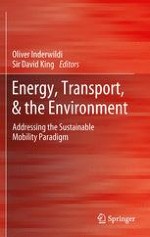2012 | OriginalPaper | Buchkapitel
Global Consequences of the Bioenergy Greenhouse Gas Accounting Error
verfasst von : Tim Searchinger
Erschienen in: Energy, Transport, & the Environment
Verlag: Springer London
Aktivieren Sie unsere intelligente Suche, um passende Fachinhalte oder Patente zu finden.
Wählen Sie Textabschnitte aus um mit Künstlicher Intelligenz passenden Patente zu finden. powered by
Markieren Sie Textabschnitte, um KI-gestützt weitere passende Inhalte zu finden. powered by
